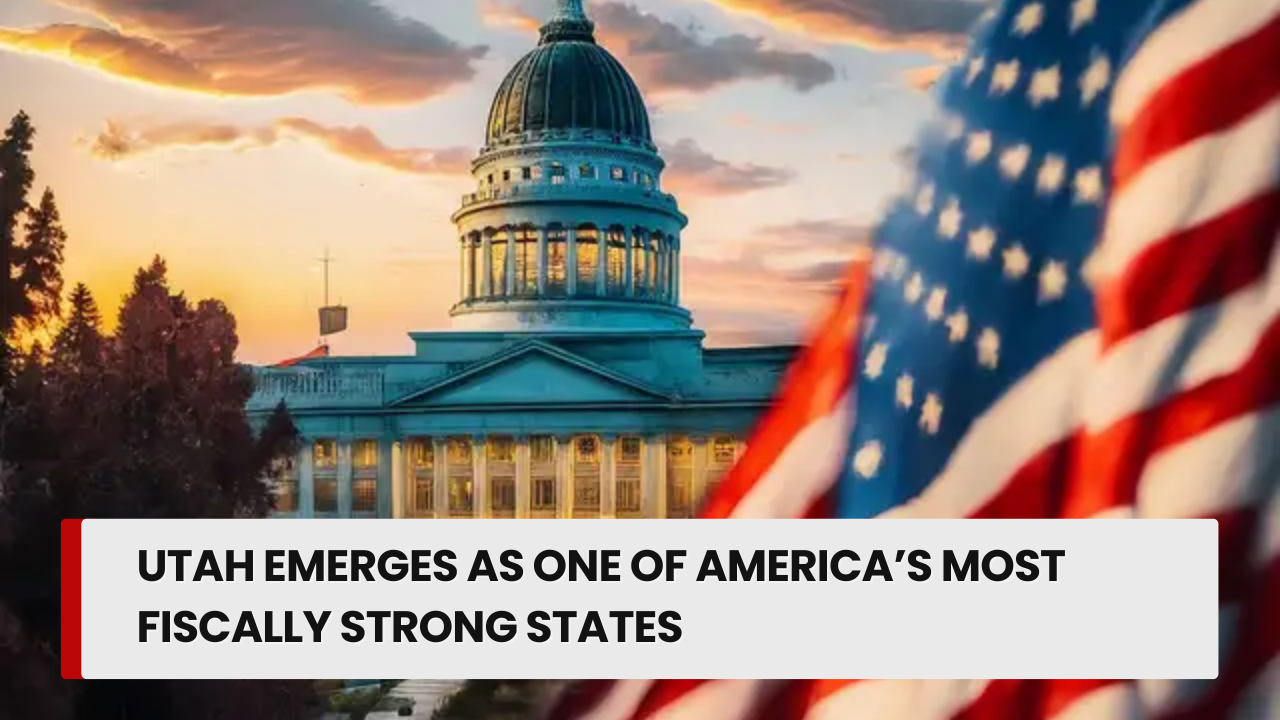Utah has once again secured its position as one of the nation’s most financially stable states, according to a newly released national dataset evaluating government debt across the country. The analysis, published in the Reason Foundation’s State and Local Government Finance Report, highlights Utah’s consistently low debt per resident — a key indicator of long-term fiscal health.
The data spans all levels of government, including 50 states, more than 2,300 counties, over 8,600 municipalities and 10,000 school districts. Utah placed 45th in total combined debt per person at $7,805, which is less than half the U.S. average of $18,376. The state also ranked 49th in state government debt per capita and 48th in overall debt ratio — a measure comparing liabilities to assets.
Mariana Trujillo, director of government finance at the Reason Foundation, praised Utah’s financial track record, saying the state is “one of the least indebted and most fiscally healthy in the country.”
Why Utah’s Low Debt Matters
High debt burdens can strain state budgets by increasing interest payments and limiting flexibility when revenues fall during economic downturns. Utah policymakers have worked deliberately to avoid those risks.
State House Budget Chair Val Peterson noted that Utah’s rainy-day savings surpassed its general obligation debt for the first time in 2025 — a milestone made possible by aggressive debt reduction and long-term planning. Since 2021, Utah has paid down 66% of its state-level debt.
Peterson added that Utah’s conservative financial approach — including paying cash for many projects — ensures the state “lives within its means,” a practice that has supported multiple years of tax cuts and helped Utah maintain its coveted AAA bond rating. This top-tier rating allows the state to borrow at lower interest rates when necessary.
Where Utah Cities Stand on Debt
Debt levels vary widely across Utah’s cities. Salt Lake City carries the highest debt per capita at $23,477, largely due to the multi-billion-dollar reconstruction of the Salt Lake City International Airport. Importantly, taxpayers are not responsible for repaying most of that debt — airport-related liabilities are covered by passenger fees and airline agreements, not local residents.
Other notable city debt levels include:
- Vineyard – $7,128 per resident
- Payson – $4,975 per resident
- Spanish Fork – $4,313 per resident
- Pleasant Grove – $3,595 per resident
Provo Chief Administrative Officer Scott Henderson emphasized that while residents tend to be “debt averse,” borrowing remains essential for major community projects such as recreation centers, public safety buildings and city halls. Provo’s municipal debt sits at just under $300 million — or $2,600 per resident.
Henderson stressed that responsible borrowing helps cities avoid sharp property tax increases and protects financial flexibility. “You can make progress and still work in a conservative environment,” he said.
Debt in Utah’s Counties and School Districts
School district debt also varies across the state. The highest burdens fall on larger districts like Alpine, Davis, Canyons, Granite and Nebo. Smaller districts — including Piute County, North Summit, South Summit and Rich County — carry the least debt.
Among counties, Summit County leads in debt per capita, followed by smaller rural counties such as Daggett and Kane. In overall total debt, Salt Lake County ranks first with $804 million, trailed by Utah County ($340 million) and Summit County ($240 million). Across all 29 counties, Utah has roughly $2 billion in combined county debt.
Utah’s consistent fiscal discipline continues to set it apart nationally, strengthening the state’s financial resilience and enabling long-term investments without overburdening taxpayers.



